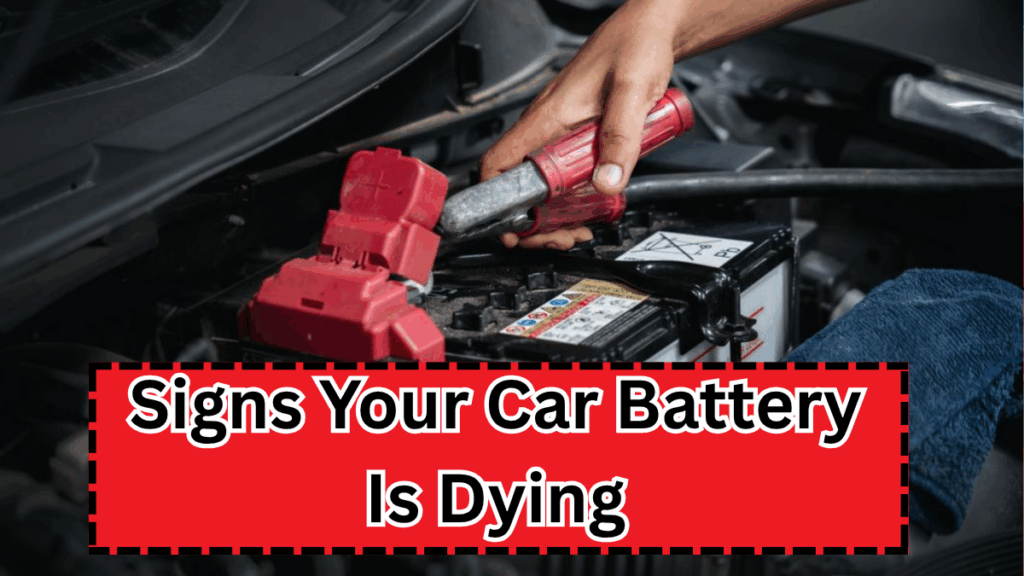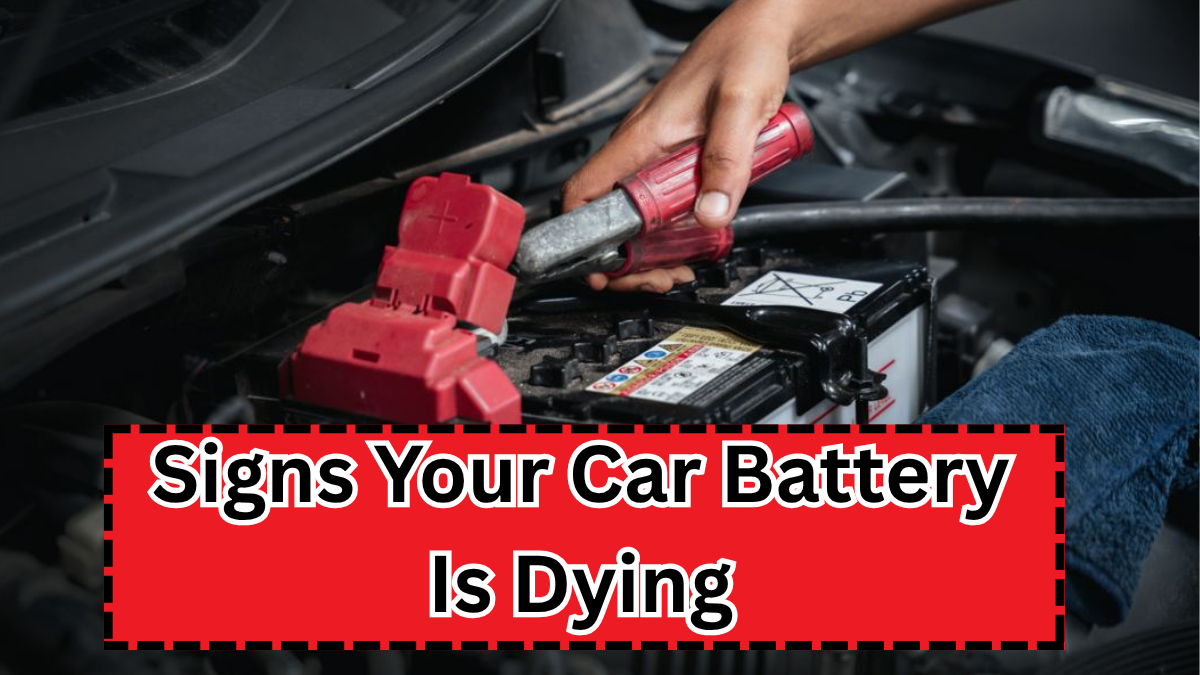Let’s face it—no one wants to be stranded on the roadside with a dead battery. Yet, many drivers overlook the early signs that scream, “Help! I’m about to fail!” Understanding the dying car battery signs and knowing what to do in time can save you from a major inconvenience (and maybe even a costly tow).
Here’s a simple guide to help you spot the symptoms and act before it’s too late.

Table of Contents
Common Signs Your Car Battery Is Dying

If your car is behaving oddly, your battery might be trying to tell you something. Watch out for these warning signs:
Slow Engine Crank
-
The engine takes longer than usual to start.
-
You may hear a sluggish cranking noise.
Dim Headlights or Flickering Lights
-
Headlights look weak, especially when idling.
-
Interior lights flicker inconsistently.
Clicking Sound When Turning the Key
-
A clear dying car battery sign.
-
This click usually means your battery doesn’t have enough juice to engage the starter.
Dashboard Warning Light
-
The battery-shaped warning light may glow.
-
Sometimes labeled “ALT” or “GEN” if it relates to the alternator.
Electrical Issues
-
Radio, power windows, or AC behaving erratically.
-
Inconsistent performance from electronic accessories.
Swollen Battery Case
-
Heat or internal failure can cause your battery casing to bulge.
-
A visual cue of imminent battery failure.
Bad Smell (Like Rotten Eggs)
-
Sulfate leakage creates a foul smell.
-
A sign your battery is leaking acid.
What to Do Before Your Battery Fails
Before your battery gives out completely, here are some proactive steps you can take:
Get a Professional Battery Test
-
Many service centers offer free battery testing.
-
Do this especially before winter or summer extremes.
Clean the Terminals
-
Corroded terminals can mimic signs of battery failure.
-
Use a terminal cleaning brush and battery-safe cleaner.
Keep Jumper Cables Handy
-
Learn jump-start tips for emergencies.
-
Always ensure cables are in good condition and stored in your trunk.
Consider Replacing the Battery
-
If your battery is more than 3-5 years old, replacement might be the best route.
-
Opt for a high-quality battery replacement to avoid future issues.
Battery Troubleshooting Table
| Symptom | Possible Cause | Solution |
|---|---|---|
| Slow engine start | Weak battery | Test or replace battery |
| Dim headlights | Low charge or alternator issue | Check battery & charging system |
| Clicking noise | Dead battery | Use jumper cables |
| Electrical glitches | Poor battery connection | Clean terminals, test battery |
| Swollen battery case | Overheating | Immediate battery replacement |
| Rotten egg smell | Battery leakage | Replace battery, clean tray |
Jump-Start Tips Every Driver Should Know
If your car won’t start and you suspect a dead battery, follow these jump-start tips:
-
Park a working vehicle nose-to-nose with yours.
-
Attach jumper cables in this order: Dead (+), Good (+), Good (–), Ground (–) on your car’s metal frame.
-
Start the working car and let it run for 2–3 minutes.
-
Attempt to start your car. If it doesn’t work, wait a bit longer or check your cable connections.
When to Replace Your Car Battery
Don’t wait for complete battery failure to act. Replace your car battery if:
-
It’s over 3 years old.
-
You’ve needed more than one jump-start recently.
-
The engine cranks weakly or won’t start at all.
-
You’re experiencing repeated electrical issues.
FAQs
Q1: How often should I replace my car battery?
Most car batteries last 3 to 5 years. Climate and driving habits can shorten this lifespan.
Q2: Can a dying battery damage my car’s electrical system?
Yes. A weak battery can put extra strain on your alternator and other electrical components.
Q3: Are jump-starts safe for modern cars?
They are safe if done correctly. Use quality jumper cables and avoid touching the clamps once connected.
Q4: What should I do if jump-starting doesn’t work?
If a jump doesn’t help, your battery may be beyond saving, or the issue could be with the starter or alternator. Consider calling roadside assistance or getting a tow to a service center.
Final Thoughts
Recognizing the early dying car battery signs and acting promptly can save you time, stress, and money. Keep a basic emergency kit in your car, learn some jump-start tips, and schedule regular battery checks—especially before extreme weather seasons.
Click here to learn more







